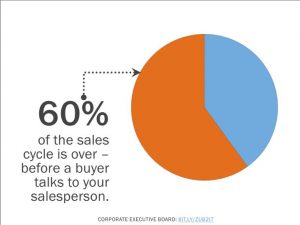The 5 things that will derail your marketing in 2012
February 8, 2012
 I don’t want to rain on anyone’s parade but the truth is — most organizations’ marketing efforts stink. And they stink for reasons well within the marketing department’s control.
I don’t want to rain on anyone’s parade but the truth is — most organizations’ marketing efforts stink. And they stink for reasons well within the marketing department’s control.
If you’re worried that your own efforts might fall short — beware of these five danger zones that can derail you in a blink!
Inconsistency: Does your monthly newsletter go out 5 times a year? Does your copy tone/style fluctuate between somber and casual? Are your weekly sales calls happening every week?
Inconsistency not only waters down your results but it also waters down your brand. If you can’t get your newsletter out on time — why in the world would I, a prospective customer, think you can deliver what you want to sell me on time?
Not having a plan: One contributing factor to inconsistency is the wishy washiness that comes from winging it. Without a document that maps out where you are going…in the rush of the day, you end up on detours you never intended. Or worse, you end up on the sidelines trying to figure out your next move, rather than moving forward.
A marketing plan doesn’t have to be a leather bound edition, but it does need to be in writing and it needs to be something you reference at your weekly/regular marketing meetings.
Trying to do too much: I want to hear a collective sigh of relief as you read this. You simply cannot do it all. So stop trying. You are far better off to do a few things consistently and well, than try to manage too many marketing tactics.
The average sized organization can only successfully produce and monitor a handful of initiatives at once. So plan it out carefully so you can deliver consistency and quality. Every time. That will be far more impressive than doing more every once in awhile.
Not matching your budget with your appetite: I see this happen all the time. A big company is stingy with their marketing dollars and does so little, they don’t even show up on the radar screen. Or the flip side — a small company saves up all their pennies and launches a huge splash but can only sustain it for 60 days and then goes quiet.
Marketing is for the long haul. You need to know you can sustain your efforts or their effect will be fleeting.
You. Yup, I said it. You’re actually the biggest risk to the marketing efforts. Why? Because you know when you’re doing something that isn’t going to work. You know what you can and can’t pull off. You know that you talk about yourself too and don’t talk with the audience about the stuff they care about enough. You know you should spend/do more and be more consistent. Maybe you even know you can’t do it by yourself but you’re too cheap to hire some help (either staff or an agency).
So what are you going to do to get out of your own way?
What do you think? Would you have a different set of obstacles? Want to add any to my list?
Stock photograph courtesy of Big Stock Photo
More


















